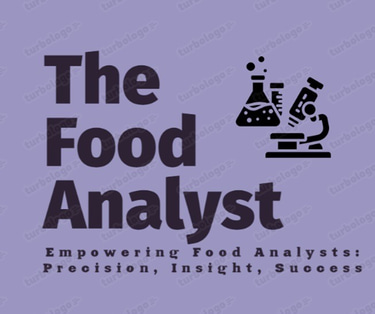"Empowering food analysts and laboratory professionals with expert insights, ISO 17025 resources, regulatory updates, industry testing requirements, training, and career opportunities for excellence in food testing."
Understanding ISO/IEC 17025:2017 Clauses 7.2.1.5 to 7.2.1.7: A Guide for Food Testing Laboratories
Clauses 7.2.1.5 to 7.2.1.7 of ISO/IEC 17025:2017 require laboratories to verify new methods for performance before use, plan and review method development with qualified staff, and allow deviations only when justified, documented, authorized, and accepted by the customer—ensuring reliability, consistency, and customer alignment in laboratory operations.
3 min read
ISO/IEC 17025:2017 sets the standard for the competence of testing and calibration laboratories worldwide. Among its most critical components is Clause 7.2, which deals with the selection, verification, and validation of methods. For food testing laboratories, proper understanding and implementation of Clauses 7.2.1.5 to 7.2.1.7 is essential to ensure accurate results, uphold customer trust, and maintain accreditation. This article provides a comprehensive yet easy-to-understand explanation of these clauses, specifically tailored for food testing labs.
Clause 7.2.1.5: Verifying Methods Before Use
Before using any test method, laboratories are required to verify that the method performs as expected under their specific conditions. Even when using well-established methods from international standards or published literature, a laboratory must confirm that it can achieve the required performance parameters such as precision, accuracy, limit of detection, and measurement uncertainty.
What does verification involve?
Verification involves conducting experiments or trials using the proposed method on samples that mimic the actual testing conditions. The goal is to ensure that the lab can replicate the results reliably and consistently using its own equipment, staff, and environment.
Example : A food lab decides to implement a new LC-MS/MS method to detect pesticide residues in apples. Although the method is published by a reputable source, the lab must first verify that it works effectively on its own instruments and within its workflow. This might involve analyzing known concentrations of pesticides in apple samples and comparing the results to the expected values.
Recordkeeping Requirement:
All verification activities must be documented. These records provide proof during audits and assessments that the lab did its due diligence before adopting the method.
What if the method changes?
If the method is later revised by the issuing body (such as AOAC or FSSAI), the lab must re-verify it to the extent necessary. This ensures continued compliance and performance.
Clause 7.2.1.6: Planned Method Development
Sometimes, standard methods may not exist for a specific food matrix or analyte. In such cases, laboratories may need to develop new methods internally. This is not a trial-and-error process; method development must be a planned and structured activity.
Planning and Resources:
Assign method development to competent personnel with relevant expertise.
Ensure that adequate resources, equipment, and materials are available.
Follow a clearly defined method development plan.
Ongoing Review: During method development, periodic reviews must be conducted to ensure the evolving method still meets the customer’s needs. This is especially important when dealing with complex matrices like dairy, meat, or processed foods where analytical challenges may arise.
Modification and Authorization: Any changes to the original method development plan must be reviewed and authorized. This ensures that all stakeholders are aware of and agree to the new direction.
Example : A customer requests a test for a rare natural preservative in a traditional snack. No validated method exists. The lab assigns food analyst to develop the method. During development, they discover that a different extraction solvent yields better results. The plan is updated, reviewed by the quality manager, and the customer is informed.
Clause 7.2.1.7: Handling Deviations from Methods
In a real-world laboratory setting, deviations from the standard test method may occasionally be necessary. These deviations are acceptable, but only under controlled and documented conditions.
Conditions for Allowing Deviations:
The deviation must be documented.
It should be technically justified (there must be a valid reason).
It must be authorized by responsible personnel.
It should be accepted by the customer.
Pre-approval Option: In some cases, deviations can be agreed upon in advance as part of the contract with the customer. This is useful when the laboratory knows from experience that some level of method adaptation might be necessary.
Example: A lab tests packaged milk for antibiotic residues using a specific buffer recommended in the standard method. On a particular day, the buffer is out of stock, and the lab uses a validated alternative buffer. The change is documented, technically justified with internal validation data, approved by the lab manager, and the customer is informed and accepts the deviation.
Practical Tips for Labs
Create Verification Checklists: Maintain standardized checklists for verifying new methods. Include criteria such as precision, recovery, and robustness.
Train Staff in Method Development: Ensure that method developers are trained in experimental design, validation protocols, and regulatory requirements.
Maintain Deviation Logs: Keep a register of all deviations, their justifications, approvals, and customer communications.
Communicate with Customers: Always keep the customer in the loop. Transparent communication builds trust and facilitates quicker approvals when needed.
Use SOPs for Verification and Deviations: Develop and implement Standard Operating Procedures (SOPs) that outline how to perform method verification, develop new methods, and manage deviations.
Food testing laboratories operate in a highly regulated and sensitive environment. A small error in pesticide detection or nutritional analysis can lead to major public health issues or legal consequences. Clauses 7.2.1.5 to 7.2.1.7 help labs:
Ensure scientific validity of their test results
Demonstrate technical competence to customers and auditors
Enhance credibility and transparency in laboratory operations
Support continuous improvement in testing capabilities
When implemented properly, these clauses don't just help in passing assessments—they create a culture of rigor, responsibility, and reliability.
© 2025. All rights reserved. All content on this website is the intellectual property of The Food Analyst. Unauthorized use or reproduction is prohibited.
Contact Us
The Food Analyst Team
We are available in multiple locations:
Bangalore | Delhi | Mumbai
Email for editorial: contact@foodanalyst.in
For advertisement: inquiryfoodanalyst@gmail.com
